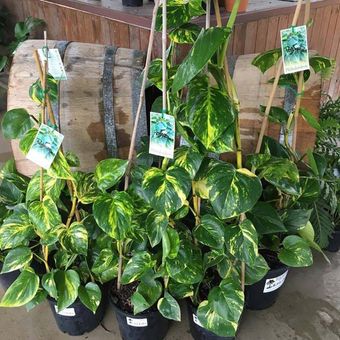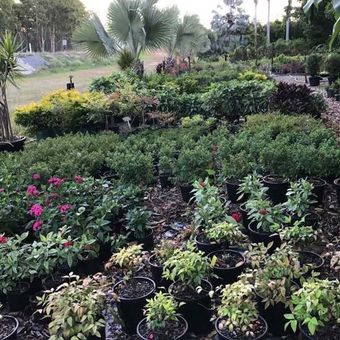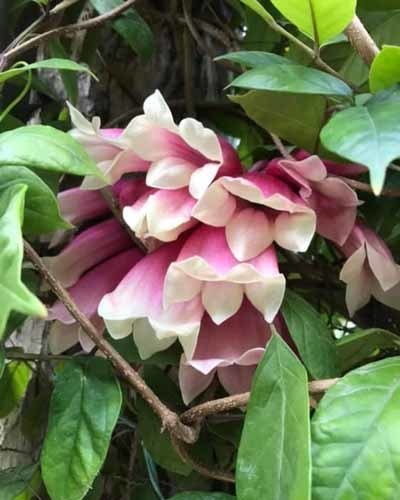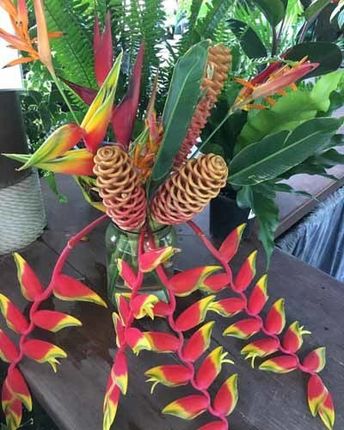Call Benaraby Junction Nursery Today! -
07 4975 0248
5 Gladstone - Benaraby Road, Beneraby, QLD 4680
Services
CREATIVE, AFFORDABLE AND HELPFUL GARDEN ADVICE BY PEOPLE WHO KNOW THEIR PLANTS
WE CAN HELP YOU TO DESIGN YOUR PERFECT GARDEN
WE CAN HELP YOU TO DESIGN YOUR PERFECT GARDEN
Garden Design Services in Central QLD
HOW TO PLANT YOUR PLANTS
First of all, dig in the garden to see what type of soil you have. If it is rock, clay, shale or all three then you will need to add Gypsum to break the clay and ActivGrow to improve the soil by giving nutrients and fibre to your plants.
Soak your plants thoroughly before planting. Dig the holes (should be 100mm wider and deeper than the pot they are in) and put the soil in the wheel barrow until it is ¾ full, then add a bag of Active 8 and mix it well. Sprinkle a 6” pot full (140mm) of Gypsum in the bottom of the hole then add a shovel full of the soil mix from the barrow on top of the Gypsum. If the ground is really dry, fill the hole up with water and wait for it to disperse.
Lift your plant out of the pot carefully by holding the bottom of the trunk and pat around the pot until it falls off (or cut the bag off), place the plant directly into the hole. DO NOT tease the roots out. By doing so dehydration will start straight away and your plant will start losing leaves or drooping. All new roots will grow outwards from the existing root system. Soil level in the pot should sit flush with the ground level. Fill the hole with the soil mix from the barrow and water in your plants. If the soil recedes below the root system, top up with soil mix to make sure all roots are covered. Maintain your plants regularly with water and fertilise according to growth seasons.
POTS
When potting new plants into pots, it is advisable to use a good grade of potting mix. ActiveGrow can also be mixed with potting mix to add fibre, nutrients and to retain moisture. Follow the steps above but eliminate the Gypsum. If the pots are in the sun, then they should be watered every two days in summer and twice a week in winter. Watering should be done slowly to make sure that it goes through the root system and not run over the lip of the pot. If you are using trays under your pots to catch water, then fill the tray with stones or gravel and sit the pot on top of the stones. This will eliminate the bottom of the pot sitting in constant water which in turn eliminates you plants from picking up bacteria.
SUCCULENTS AND CACTI
If you are making a Succulent or Cacti garden, then the soil should be very well drained. You can do this by adding washed sand to the existing soil and preferably have your garden in at least 5 hours of sun light a day. Water well when first planted, then every 3 days in summer and once a week in winter.
If you are potting your Succulents or Cacti, use a good grade potting mix and washed sand. Mixing rate is 2 thirds potting mix to 1 third sand and mix these together well. Water regularly twice a week!
HAPPY GARDENING
We Can Consult With You to Design the Perfect Garden
PLANT MAINTENANCE
All plants will respond to the type of soils they are planted into. If you have a heavy soil then it is advisable to use gypsum as it is a clay breaker, soil conditioner and PH balancer. Gypsum should be used in the bottom of the hole.
If your soil is too light, then you should add fibre to hold the moisture in around the root system. A good fibre additive is ActivGrow Dig the holes for your plants and put the soil in the barrow, add a bag of Active 8 to the soil in the barrow and use the mixture to plant your plants.
After planting, water your plants in thoroughly to help them settle and hydrate themselves. Water them the next two evenings and then miss a day. Repeat that step but miss two days. Continue on until you have them adjusted to your watering schedule. Every watering schedule may be different due to your soil type. In the summer months, plants take up more water at night when the ground is cool. It is best to water your garden thoroughly and less often, rather than give it sips of water more often. The water should be left on long enough to soak down to the root system.
If you are using ActivGrow to improve your soil, you won’t need to use fertilizer as there is enough of everything in the ActivGrow to hold your plants until the next growth season.
March, April and May as well as September, October and November are all growing seasons for plants. It is important to prune, fertilize and Mulch your gardens at the beginning of these growth seasons (March and September only), to achieve the best results for your plants. Pruning will destress the root system and make the plants stronger with better foliage and more flowers. Fertilizing will give them nutrients, better colour and growth, and mulching will help maintain the moisture in the ground and eliminate weeds.
Gardening can be hard work to start off but once the holes are dug, the soil revamped and the plants are planted, then it is just a matter of maintenance. By getting into a routine especially with watering on a regular basis, and then pruning twice a year, fertilizing and mulching, you will find your garden will respond to the routine. That will leave you time to enjoy the results of your hard work. By following these steps, your garden should flourish! This information is a guide line only. If you have any problems, please feel free to call on us (07) 4975 0248, 7 days from 8.30am to 4pm and we will be happy to help you. Please choose your plants carefully, as the nursery is not responsible for any plants purchased, as their maintenance is now up to you.
HAPPY GARDENING……..from all of us at Benaraby Junction Nursery.
NEED ADDITIONAL HELP?
Come and Ask
ADDRESS
5 Gladstone - Benaraby Road, Beneraby, QLD 4680
BUSINESS HOURS
- Mon - Sun
- -
Public Holidays:
Open Normal Hours
Closed Only:
Christmas Day, Boxing Day, New Year's Day, Good Friday





